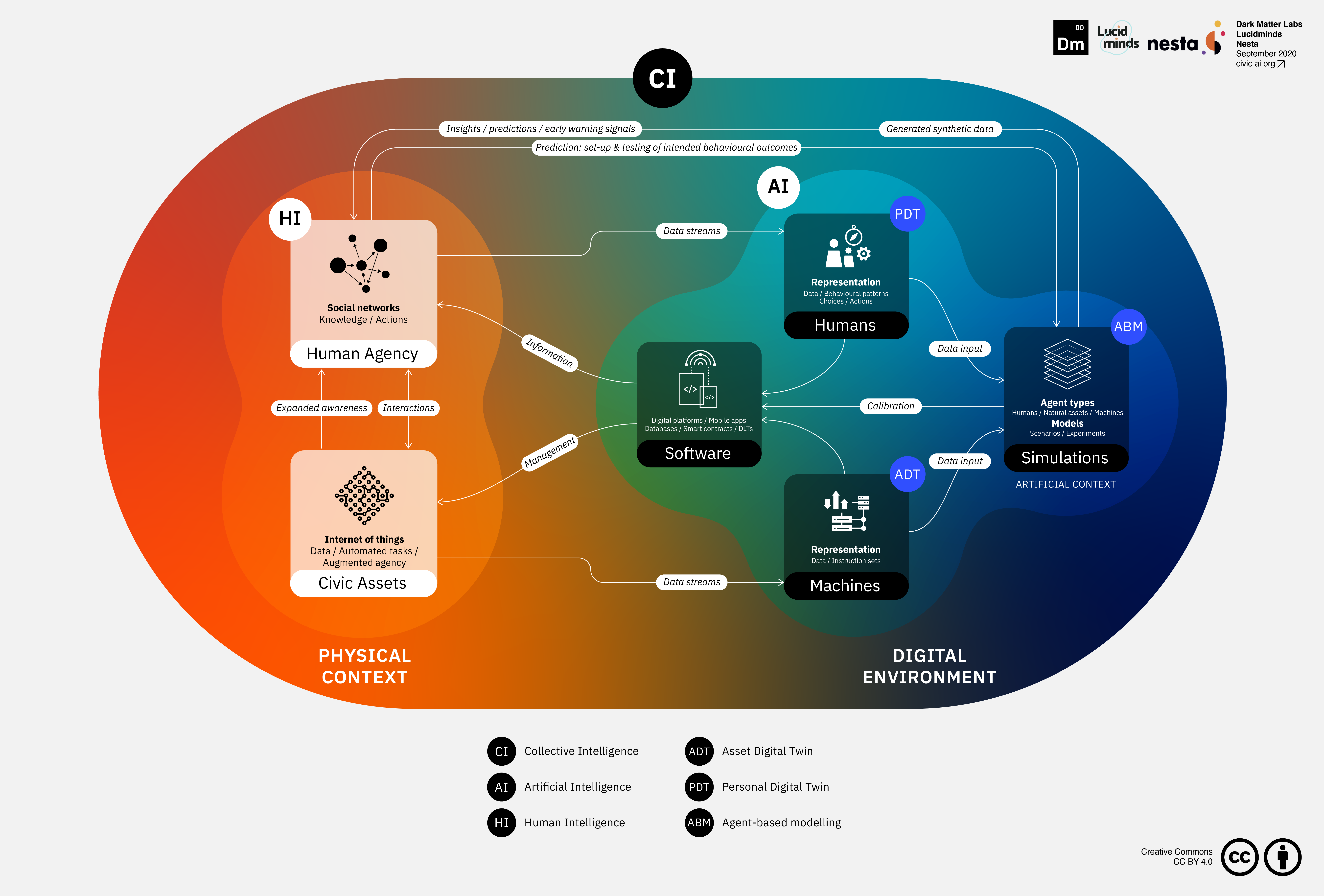Dark Matter Laboratories: “…As with all so-called wicked problems, the climate crisis occurs at the intersection of human and natural systems, where interdependent components interact at multiple scales causing uncertainty and emergent, erratic fluctuations. Interventions in such systems can trigger disproportionate impacts in other areas due to feedback effects. On top of this, collective action problems, such as identifying and implementing climate crisis adaptation or mitigation strategies, involve trade-offs and conflicting motivations between the different decision-makers. All of this presents challenges when identifying solutions, or even agreeing on a shared definition of the problem.
As is often the case in times of crisis, collective community-led actions have been a vital part of the response to the COVID-19 pandemic. Communities have demonstrated their capacity to mobilise efficiently in areas where the public sector has been either too slow, unable, or unwilling to intervene. Yet, the pandemic has also put into perspective the scale of response required to address the climate crisis. Despite a near-total shutdown of the global economy, annual CO2 emissions are only expected to fall by 5.6% this year, falling short of the 7.6% target required to ensure a temperature rise of no more than 1.5°C. Can AI help amplify and coordinate collective action to the scale necessary for effective climate crisis response? In this post, we explore alternative futures that leverage the significant potential of citizen groups to act at a local level in order to achieve global impact.
Applying AI to climate problems
There are various research collaborations, open challenges, and corporate-led initiatives that already exist in the field of AI and climate crisis. Climate Change AI, for instance, has identified a range of opportunity domains for a selection of machine learning (ML) methods. These applications range from electrical systems and transportation to collective decisions and education. Google.org’s Impact Challenge supports initiatives applying AI for social good, while the AI for Good platform aims to identify practical applications of AI that can be scaled for global impact. These initiatives and many others, such as Project Drawdown, have informed our research into opportunity areas for AI to augment Collective Intelligence.
Throughout the project, we have been wary that attempts to apply AI to complex problems can suffer from technological solutionism, which loses sight of the underlying issues. To try to avoid this, with Civic AI, we have focused on understanding community challenges before identifying which parts of the problem are most suited to AI’s strengths, especially as this is just one of the many tools available. Below, we explore how AI could be used to complement and enhance community-led efforts as part of inclusive civic infrastructures.
We define civic assets as the essential shared infrastructure that benefits communities such as an urban forest or a community library. We will explore their role in climate crisis mitigation and adaptation. What does a future look like in which these assets are semi-autonomous and highly participatory, fostering collaboration between people and machines?…(More) –
